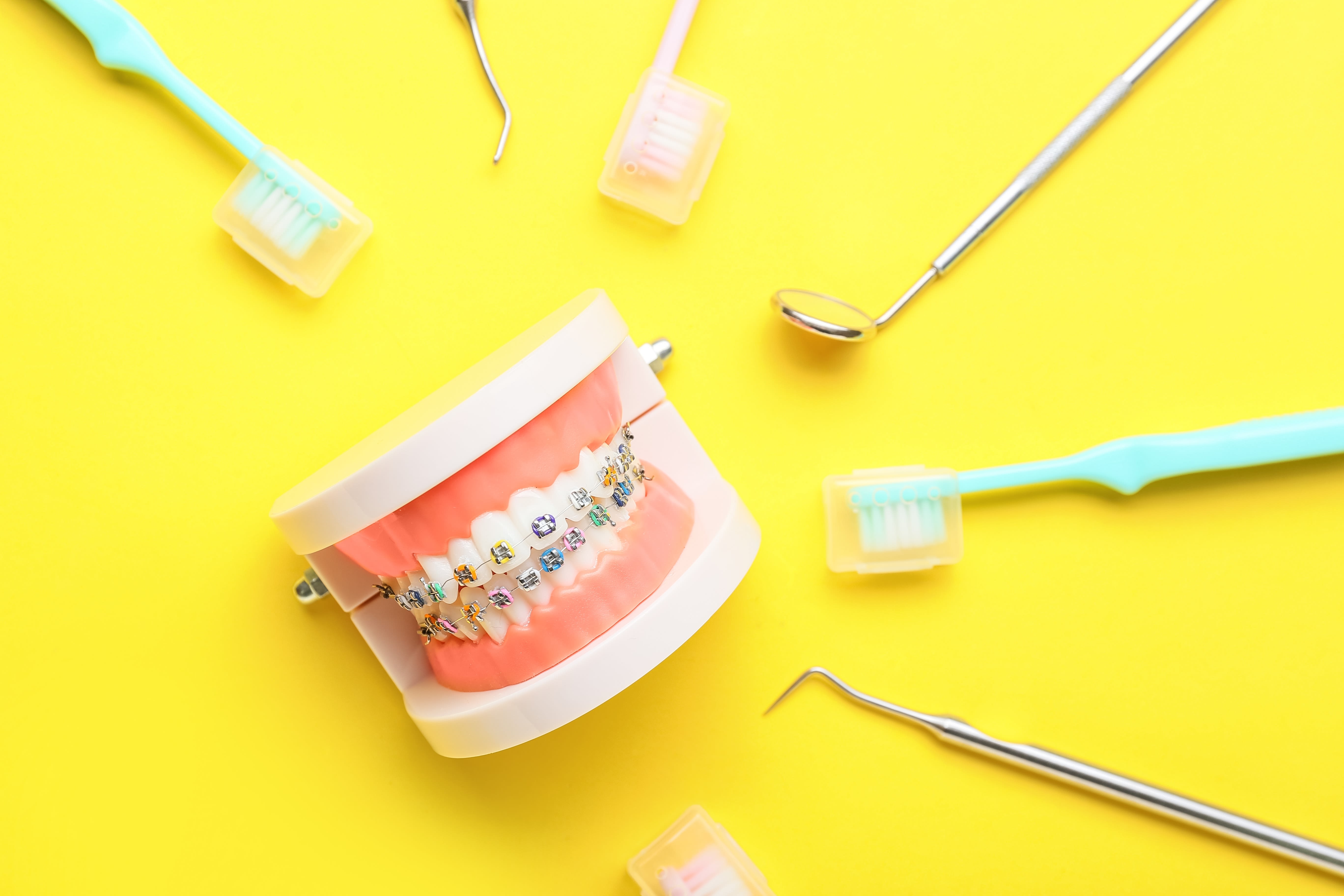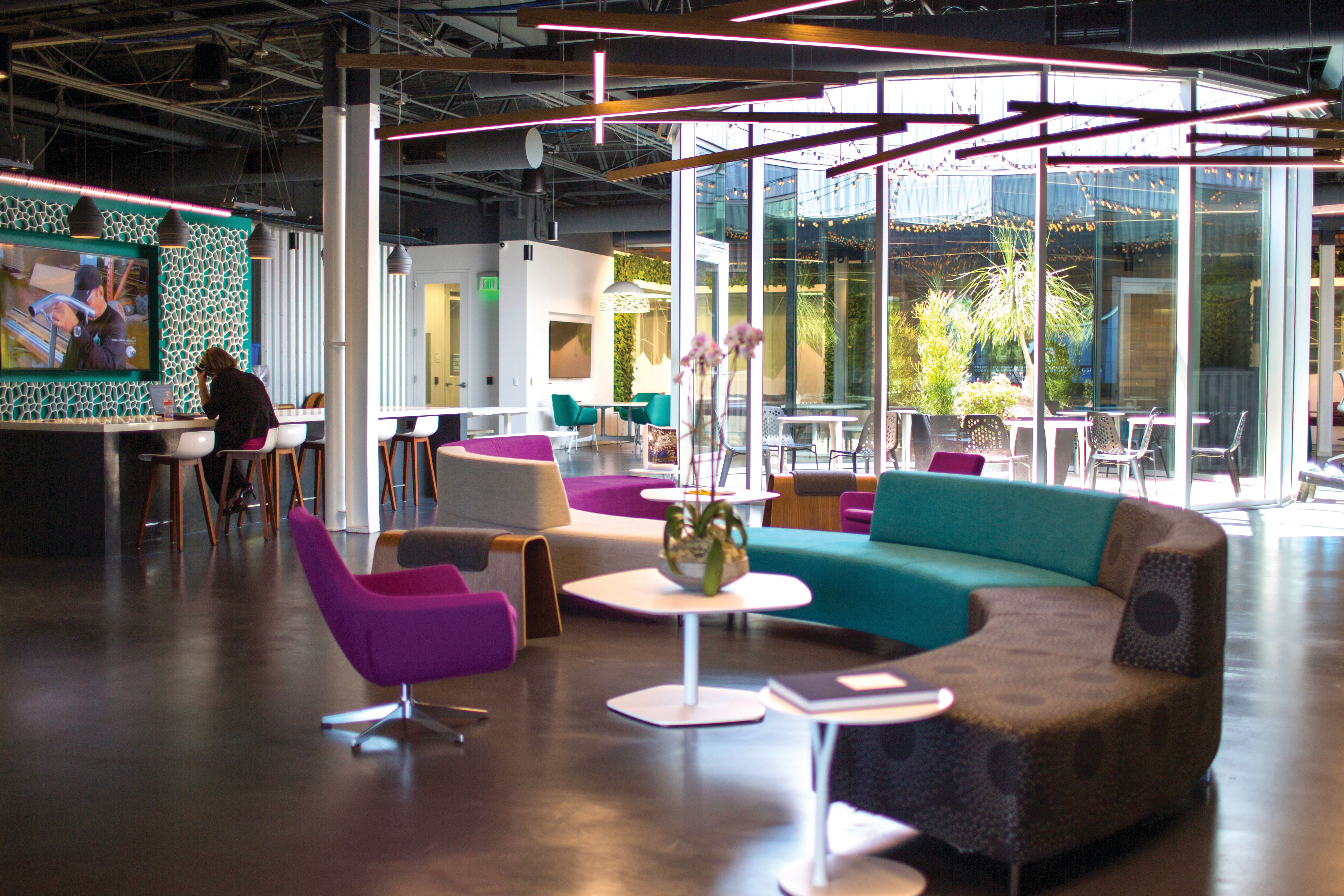
In the City with the World's Largest Medical Center, There's Still No Biotech—Yet
Reynolds Delgado doesn’t remember exactly when the idea came to him. There was no eureka moment. But after working with thousands of heart-failure patients, watching most of them die, he knew there had to be a better way to treat more patients, earlier, to alleviate their suffering.
When your heart begins to fail, you might start to feel fatigued and weak, with swollen legs, an irregular heartbeat, and a cough that won’t go away—the result of your heart’s inability to pump enough blood and oxygen to your organs. Sometimes, the condition can be treated with medicine. But when it reaches an advanced stage, surgery is required, either for a heart transplant, or the implementation of a left-ventricular assist device, or LVAD.
Both options require open-heart surgery, a complicated procedure that involves cracking the patient’s sternum, opening the chest, placing the body on a heart-lung machine and stopping the heart before either replacing it with a donor’s organ, or—as a stopgap—implanting a device that will help it pump blood until a transplant is available. In many cases, death comes first. “It’s really the devastating part of cardiology, when patients are dying from weakness in the heart,” says Delgado, a cardiologist who manages the heart transplant team and serves as director of mechanical support devices at Texas Heart Institute (THI). Maybe, he thought, he could help patients before the disease advanced.
Heart disease is responsible for one of every nine deaths in the U.S. and affects more than 5 million people, about 500,000 of whom need surgery each year. But because these patients are already very sick, the operation has a long list of potential complications. And that’s to say nothing of the expense—the typical hospital stay for someone getting an LVAD implanted is 41 days, Delgado says, which can cost hundreds of thousands of dollars. Meanwhile, because of the difficulty matching patients with organ donors, transplants are quite rare. “We’re looking at a half-million people per year who are heading for death or for a transplant,” says Delgado. “There are only 2,000 donor hearts available per year, and not many more than 2,000 LVADs done a year,” which leaves a huge number of patients who don’t currently have a good treatment option.
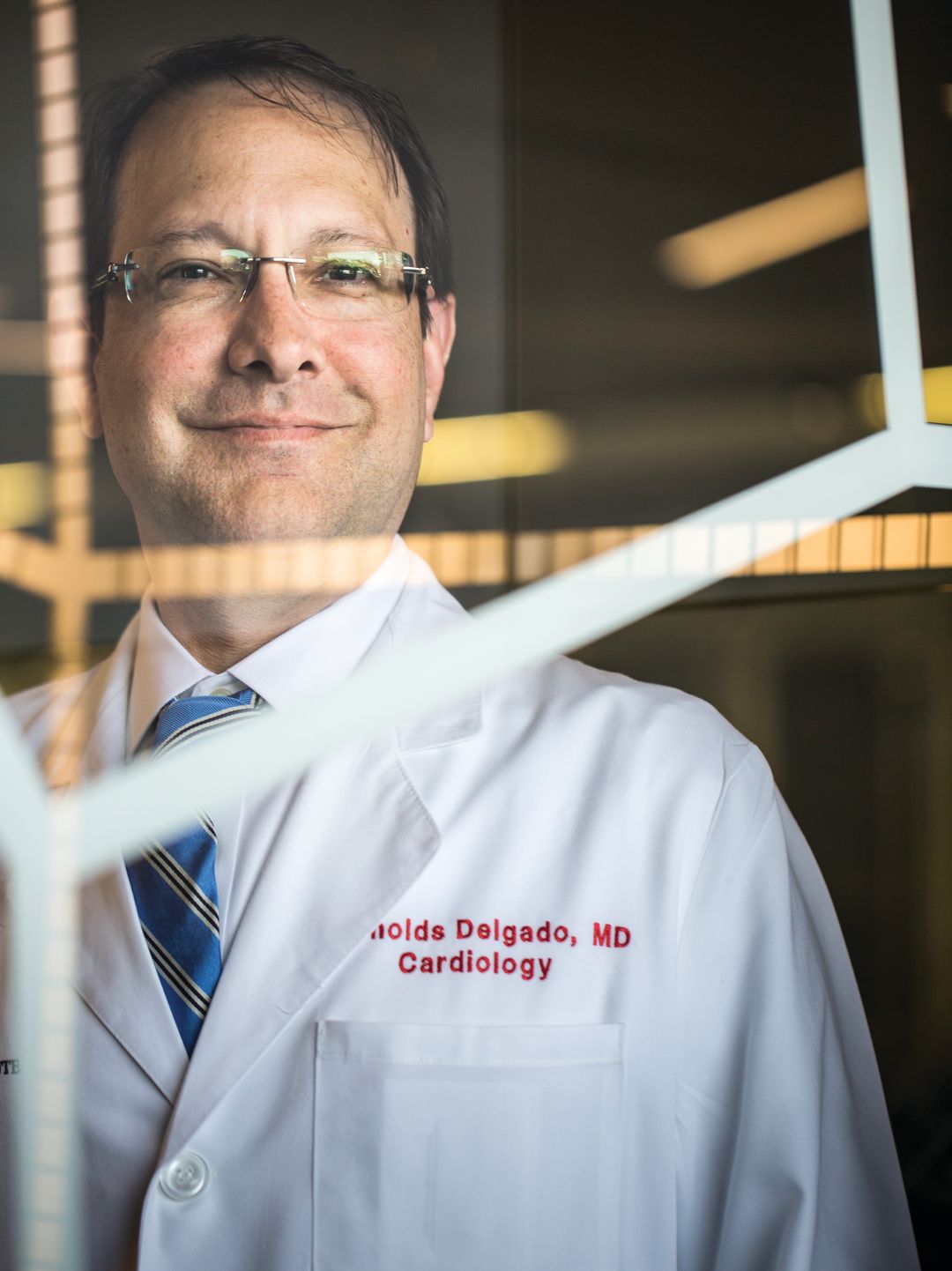
Image: Eric Kayne
After more than a decade of treating those patients, Delgado began to piece together a concept for a much less invasive surgical option. “What spurred me on was seeing the sick patients going through this major surgery and so many of them dying as a result of the complications,” he says. “We needed something gentler that could assist with what the heart needs without major surgery.”
In 2006, he patented an idea for a tiny pump device that would be implanted before a patient reached the stage of heart failure resulting in damage to other organs. The pump, thinner than a pencil and only a few inches tall, would be inserted through an artery in the leg with a catheter, meaning that a patient could get fitted with a small pump within 15 minutes under local anesthesia, and potentially walk out of the hospital shortly afterward—far gentler and cheaper, of course, than open-heart surgery and the attendant hospital stay.
Delgado is certainly not the only Houston doctor to come up with an idea for a better way to do surgery. But he’s the rare local doctor who’s come close to seeing his idea become a reality. He happened to know Leo Linbeck, the CEO of Linbeck Construction, who’d constructed a building for THI in 2002. And Linbeck happened to be interested in investing in the life sciences—rare among local investors—founding Fannin Innovation Studio (FIS), a local startup incubator for developers of new drugs and medical devices, in 2007, and taking on Delgado’s idea that very same year.
Since that time, a team of engineers and scientists has been working tirelessly to develop the device, called Aortix. This summer, if the FDA gives the go-ahead, the Houston-based company, Procyrion, will be implanting the first of Delgado’s heart pumps in humans in a clinical trial at Duke University. If that succeeds, the device will likely undergo more testing at the Texas Medical Center.
Should Aortix make it all the way to the market, it will be one of the first in a wave of local life sciences startups to go from a good idea to a successful product, with the potential to show the city a new way to diversify its economy. Today the company still stands as an atypical example of the city’s brightest minds in science successfully connecting with others who have the business know-how—and the funding—to get potentially life-saving technology to the people who need it. This is the kind of collaboration that, each year, generates billions for other cities’ economies—but not Houston. Not yet.
Back when Procyrion started working on Aortix, FIS was virtually the only game of its kind in town. But Houston has seen the arrival of some new players who have identified the city’s untapped potential. Procyrion recently set up a shop inside JLABS, the shiny-new lab space Johnson & Johnson just opened inside the Medical Center’s also shiny-new Innovation Institute, the result of a coordinated movement in Houston—one that could turn the city into a biotech hub, where hundreds of Delgados could be working on hundreds of revolutionary devices, in partnership with organizations across the city.
But first, everyone has to learn to work together.
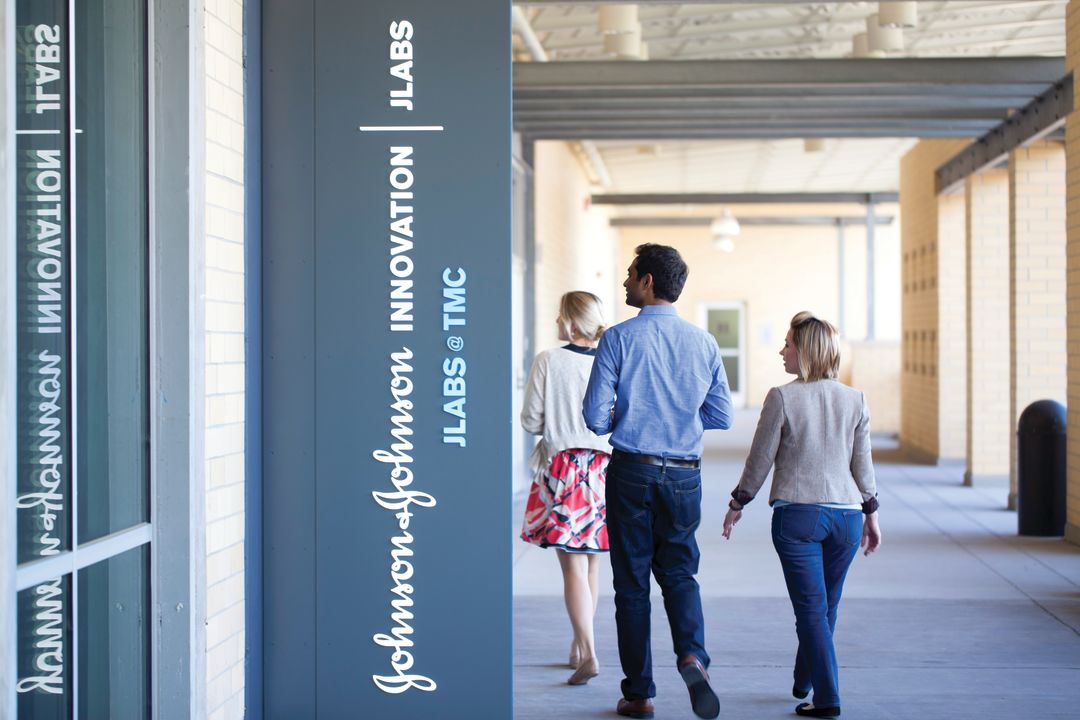
Image: Eric Kayne
The Texas Medical Center is famous for many things, not the least of which is its staggering size: The world’s largest center of its kind, the 21 hospitals that comprise much of the 50-million-square-foot TMC campus serve 8 million patients per year. Nearly $3 billion worth of additional buildings are under construction here, while over $2 billion worth of research takes place annually. What the TMC is not known for, however, is turning that research into new drugs and devices, like Aortix, that can change patients’ lives. In this area, our city and its massive Med Center have long lagged far behind places like San Francisco and Boston.
The situation is, in many respects, baffling. All the major building blocks for a thriving biotech industry exist here, including huge clinical and research institutions, world-renowned physicians and researchers, highly skilled engineers, and a bustling business community. So what’s missing? According to Rice professor Jack Gill, it’s a catalyst—something to connect these various pieces and set the resulting ecosystem in motion.
“If you talk to high-powered academics, scientists and physicians, their idea of success as a professor is ‘get a lot of grants, raise a lot of money, put a great research team together, train a lot of scientists, publish a lot of papers, and occasionally end up with discoveries to be patented.’ And for them, that’s the whole game,” he says. “But of course if they make a major innovation or discovery, it needs to be productized for it to benefit millions.”
The thing is, scientists and physicians rarely attend business school—just as most MBAs aren’t also PhDs—and many of them are too busy with their day jobs seeing patients or teaching students to take their ideas or research to the commercialization stage. That’s where an entrepreneur should come in.
“Houston and Texas have a great entrepreneurial mindset, but mostly in oil and gas and finance and real estate and all these traditional fields, but not in technology, not in life sciences,” Gill says. In other words, our get-rich-quick wildcatter instincts have kept us too focused on finding the next valuable patch of land, rather than the next valuable batch of biotechnology, the development of which takes years and years, at a steep expense and with only a slim chance of success.
Yet venture capital is necessary to fund startups like Procyrion, which develop good ideas based on good science into marketable products that can reach patients. Startups in Boston and San Francisco typically partner with, or get acquired by, large device firms like Medtronic or giant pharmaceutical companies like Pfizer or Johnson & Johnson, once they convince the big companies their drug or device has a good chance of succeeding. That doesn’t happen often here.
A native of Lufkin, Texas, Gill used to be a Silicon Valley venture capitalist himself. After founding Vanguard Ventures in 1981, he managed over $500 million in funds, which he invested in drug and medical device companies. He started teaching a course in Life Science Entrepreneurship at Stanford University in the ’80s in order to keep his finger on the pulse of new technology and innovations that young minds at Stanford were beginning
to tease out.
Eventually, Gill brought the class to Harvard University and, in 2006, Rice, where he’s now taught more than 5,000 students. Now 80, he hopes to show young medical students, business majors and engineers the potential career paths—just like his own—in the field of life sciences entrepreneurship in Houston. Gill came here, he says, because he thinks the city will be a hotspot in what he calls the forthcoming “golden age” for biotechnology—as long as the multiple powerhouse institutions of the Texas Medical Center start thinking of each other as collaborators, not competitors.
“Historically, all these great institutions at the Texas Medical Center, like Baylor College of Medicine and UT Health and MD Anderson and so on, they saw themselves as competitors with each other for faculty and students and so forth, so there was not an early or long-running sense of collaboration,” Gill says. “If you go back a decade or so, Houston is beginning to wake up and realize it’s a powerhouse in the life sciences, but we need to adopt these more progressive models of collaborative programs—collaboration across disciplines of science, engineering and medicine, and collaboration by heavy overlay of an entrepreneurial mindset and entrepreneurial business. And that’s been accelerating over the last decade.”
At Rice, Gill provides the initial link between students in diverse fields, many of whom, he says, have gone on to be a part of Houston startups focused on medical innovations. “Now, a lot of people have awakened to that opportunity,” Gill says, grinning. “And that’s why it’s so exciting here in Houston.”
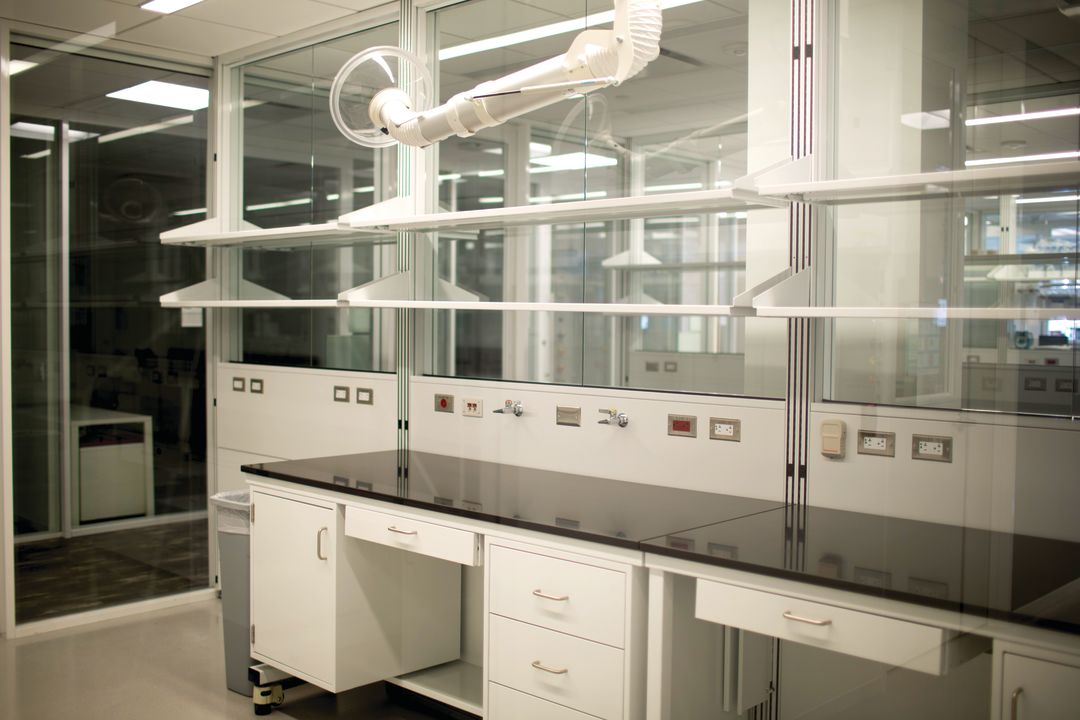
Image: Eric Kayne
Step inside JLABS, the brand-new space Johnson & Johnson opened in Houston just two months ago, and you’ll find scientists from 21 companies, Procyrion among them, hard at work behind high-powered microscopes in its biology labs or printing 3D devices with help from the computer-assisted design machines at its prototype labs. J&J is the first major pharmaceutical company to stake a claim in Houston, a big win that’s been years in the making for the Texas Medical Center—and that’s largely traceable to the vision of one man.
In 2012, TMC’s nonprofit umbrella organization tapped Robert Robbins as its new CEO. At first, the match didn’t make much sense. Robbins is a celebrated cardiothoracic surgeon, known for heading up Stanford's heart institute. The traditional duties of the organization he now leads have been to help maintain infrastructure for the center’s 56 hospital, educational and support institutions, with duties including providing chilled water and maintaining its massive parking facility—the world’s largest!—generating nearly $80 million in annual revenues. But from the start, Robbins saw the potential to do more.
“Growing up in a little town in Mississippi, I’d always known about the Texas Medical Center, and as a cardiac surgeon, I knew all the work being done here. I always thought there was a great opportunity to build on the resources that were already here,” Robbins says. “I had the fortune to be in the Bay Area when it exploded in life sciences. So when this job became available, I started thinking about what we could do. A key part of the puzzle was the commercialization and innovation.”
After arriving in Houston from Stanford, Robbins immediately launched an effort to create more opportunities for collaboration between the city’s hospitals and research institutions, polling them all and establishing five institutes aimed at addressing their common needs: in innovation, health policy, regenerative medicine, genomics and clinical trials.
The newly minted Innovation Institute—which houses JLABS, along with the entities known as TMCx and TMCx+—was the first arrival, focusing squarely on developing and incubating life sciences startups that take good ideas and make them into viable products with healthy companies behind them. The Health Policy Institute is also up and running, with the other three on the way.
All five, of course, are meant to foster each other. For instance, the Clinical Trials Institute will feature a program Robbins is initiating to streamline the process for testing drugs and devices.
Currently, companies must apply at each hospital individually, but soon they’ll be able to take advantage of a single application. This more efficient system will eliminate wasted resources and increase companies’ chances of winning approval to test their products at the Med Center—something that could have benefited a startup like Procyrion, which is doing initial testing for Aortix in North Carolina.
In January, Robbins tapped Erik Halvorsen, the former director of business development at Harvard, to lead the Innovation Institute. In this capacity, Halvorsen oversees both TMCx, an accelerator that guides two groups of startups each year through a curriculum focused on turning good ideas into viable companies, and TMCx+, an incubator that provides space and tools for companies that are further along with their products. “It’s interesting, because from the research perspective and the clinical capabilities and excellence, Houston is highly advanced—size-wise, and in level of sophistication … as advanced as anywhere else in the country that I’ve seen,” Halvorsen says. “But in terms of a track record for translating those discoveries and innovations into new companies and new products, Houston’s early. We’re behind.”
One of Halvorsen’s main goals is bringing his Boston venture-capital connections down to Houston to see what they’re missing out on. “The raw materials are here. That base amount of research and clinical is so good and so big, that all the other things are just infrastructure and resources that we put on top of it,” Halvorsen says. “So there’s no reason why you’d look at it and say ‘we’re too late to the game, we can’t get into it.’ Complete opposite. To some extent the deals in Boston and San Francisco are picked over, there’s almost too much competition for those deals. Houston is an untapped resource that people just aren’t aware of.”
JLABS is Johnson & Johnson’s fifth such effort—there are two in San Francisco, one in Boston and one in San Diego—and features 34,000 square feet of lab, office and event space, which is put to use every other week when a different life sciences investor comes to meet with its companies. To become part of JLABS, these companies had to apply and, when accepted, pay a licensing fee that includes access to the facilities and this rotating lineup of investors (JLABS also provides back-end administration that can get onerous for scientists, like permitting and disposal of hazardous materials). Many of the current roster of 21 companies are Houston-based, like Procyrion, while others are from around the country and the world.
The hope is that they will mature in Houston, make what those in the industry call a “successful exit” by partnering with J&J or another big pharmaceutical or device company, and then stay put, continuing to pump money and intellectual capital back into the city’s economy—another crucial link in the ecosystem that’s currently missing.
In Houston, these companies typically have been isolated from each other. “It can feel quite lonely to be an entrepreneur in biotech or pharma if you’re on your own and you try to set up your own lab and buy your own equipment,” says Emmanuelle Schuler, the head of JLABS at TMC. “But by being here, we create this think-tank environment where ideas are shared, where CEOs and scientists who are here under this roof help each other and foster mentorship relationships and things like that. It’s very significant.”
Robbins thinks Johnson & Johnson is the first of many major pharmaceutical and biotech companies that will have a presence here, although, he says, it could take anywhere from five to twenty years. He believes that eventually, “every major pharma company and diagnostic and device company will have a location in Houston.”
In the midst of a national oil bust, Houston civic leaders and economists alike have pointed to our diversification as one reason this isn’t the same grim situation we found ourselves in during the ’80s (see p. 29). The consistent growth of our Medical Center, which employs more than 106,000 people, is helping to buoy the otherwise stagnant economy. But what if we could diversify even more? What if the jobs we created were more stable—and higher-paying—than those in the risky energy sector? What if Houston became a thriving life sciences hub, where some of the $2 billion spent annually on research translated into sales of new drugs and medical technology?
The next hurdle for Robbins in making this scenario a reality is getting the go-ahead to build a $1.5 billion, state-of-the-art biotechnology campus called TMC3—a 30-acre research center that will be under the umbrella of the Innovation Institute—then stocking it with the brightest minds he can find. Envisioned with a helix-shaped plaza running through it, TMC3 would include retail space, a hotel and a conference center on what’s now a parking lot between Old Spanish Trail and South Braeswood Boulevard.
Because of its collaborative model, Robbins sees huge potential for research at the new center to have a lasting impact on human health. But to build the campus, the Medical Center needs to reach agreements with University of Texas, Texas A&M, Baylor College of Medicine and MD Anderson, all of which have long been competitors. Still, Robbins believes they can band together to give Houston—and themselves—the chance to compete at the top level with other life sciences hubs. “We’re the convener, and the cheerleader,” Robbins says, laughing. “Think of us as the coach, and we’re bringing the dream team together, if you will.”
Not that the team will get very far without venture capital. A report by Rice University’s Baker Institute of Public Policy says that Texas, the second-most populous state, is fourth in this area and sliding, with North Carolina gaining on us. It has taken Houston and the TMC a decade to raise $800 million in venture capital funding for life sciences startups, something “a thriving entrepreneurship ecosystem can accomplish every couple of months,” the report says. Still, the number of companies receiving funding is actually rising, and the big-picture moves TMC is making is expected to contribute to the momentum.
“There’s a lot of reasons why it’s going to evolve and change here shortly, that companies are going to come here, that companies that start here are going to stay here,” Halvorsen says. “And companies are going to come here from outside because it’s going to be the best place for them to develop their products, test their products, and ultimately sell their products back into these hospitals.”
Robbins and Gill came to Houston from Silicon Valley; Halvorsen, from Boston. All three moved here because they see a future in a city known for the entrepreneurial spirit of its wildcatters, one that could be brighter than the world has yet seen.
“I’ve heard people say that Houston will be the third coast of healthcare as early as next year,” Halvorsen says. “I’ve also heard people say that there’s no reason why we shouldn’t overtake those places and be number one in the country, in the world. And although that’s more of a 15-year plan, I think that’s entirely possible.”
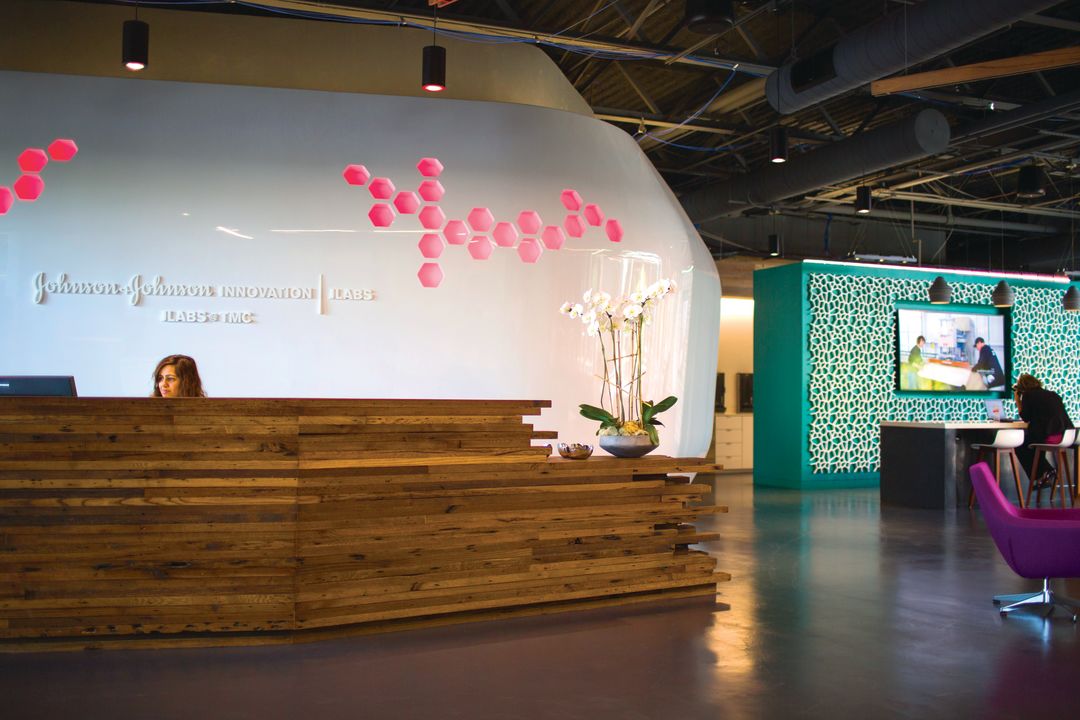
Image: Eric Kayne
Diversification, jobs, investment—all are important to Houston, and necessary for innovation. But Reynolds Delgado wasn’t thinking about any of that when he came up with his heart pump; he was thinking about his heart-disease patients’ suffering, which he’s getting tantalizingly close to alleviating with his invention.
If Aortix is proven to be a safe and effective treatment for heart failure in clinical trials, it’s likely the startup Procyrion will get acquired by a large medical device company. And if the device hits the market, Houston will probably lead the nation in implanting it in patients,
due to the massive cardiology capabilities of the Texas Medical Center.
The new technology, Delgado believes, could drastically improve the prognosis for heart-disease patients, half of which, today, are expected to die within five years of their diagnosis. “We’ll take a lot of those patients and actually cure their heart failure, by taking the work away from the heart and letting it rest and recover on its own,” Delgado says. “It has the potential to save a lot of lives, to make a dramatic impact on the disease.”
Whether or not that happens, the company’s leaders swear they’ll stay in Houston. In fact, Delgado tells us he’s already hard at work on his next idea.






































